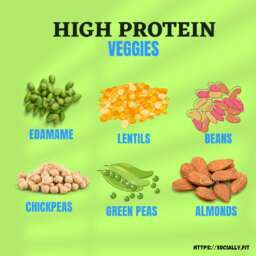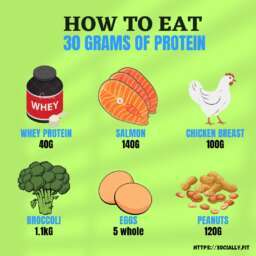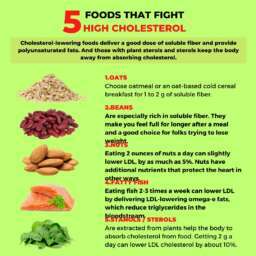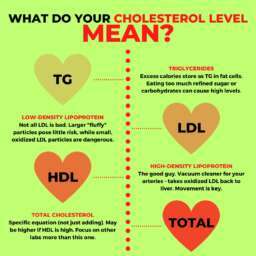Is Upma Good for Weight Loss? A Comprehensive Analysis. Discover whether upma is a suitable choice for weight loss. Explore its nutritional benefits, ingredients, and how it compares to other weight-loss-friendly foods.
Introduction
In the quest for effective weight loss solutions, many people seek nutritious and satisfying meals. Upma, a traditional South Indian dish, has gained popularity in recent years. Consequently, many individuals wonder: Is upma good for weight loss? This article explores the benefits and nutritional aspects of upma, helping you understand its role in a weight-loss diet.
Is Upma Good for Weight Loss
What is Upma?

Upma is a popular South Indian dish made primarily from semolina (also known as rava or sooji). This savory meal typically includes various spices, vegetables, and sometimes nuts, making it both flavorful and nutritious. The preparation involves roasting the semolina to enhance its flavor before cooking it with water and other ingredients. Traditionally enjoyed as breakfast, upma is versatile and can be customized with different vegetables and spices to suit personal preferences.
Beyond its taste, upma is celebrated for its simplicity and ease of preparation. It can be whipped up quickly, making it an excellent option for busy mornings. Additionally, upma can be served with chutney or yogurt, enhancing its nutritional profile and flavor. With its rich cultural heritage and adaptability, upma has become a staple in many households and is gaining popularity worldwide.
Is Upma Good for Weight Loss
Nutritional Profile of Upma

Understanding the nutritional profile of upma is crucial when evaluating its potential for weight loss. Below is a breakdown of its components:
- Calories: A typical serving of upma (around 100 grams) contains approximately 150 calories.
- Carbohydrates: Upma primarily consists of carbohydrates, providing energy.
- Fiber: Depending on the added vegetables, upma can be a good source of dietary fiber.
- Protein: While not a high-protein dish, it does offer some protein content from semolina and any added ingredients.
- Vitamins and Minerals: Upma can contain various vitamins and minerals, depending on the vegetables used.
Is Upma Good for Weight Loss
Health Benefits of Upma

Weight Loss
Many people seek foods that promote weight loss. Upma, when prepared correctly, can be beneficial for several reasons:
- Low in Calories: As mentioned, upma is relatively low in calories. Thus, it allows you to enjoy a filling meal without consuming excessive calories.
- High in Fiber: Including vegetables increases fiber content, which aids in digestion and promotes a feeling of fullness. Consequently, this can help control appetite.
- Nutrient-Dense: Upma offers a range of nutrients, making it a better choice compared to many processed foods.
- Healthy Fats: When prepared with a small amount of healthy oil and nuts, upma provides essential fatty acids that can help keep you satiated longer, reducing the likelihood of snacking.
- Versatile Ingredients: You can customize upma with various vegetables, legumes, and spices, allowing you to create a meal that meets your nutritional needs while keeping it low in calories.
- Slow-Digesting Carbohydrates: Semolina is a source of complex carbohydrates that digest slowly, providing sustained energy and preventing spikes in blood sugar levels, which is beneficial for weight management.
- Promotes Healthy Eating Habits: Including upma in your diet can encourage the consumption of whole foods and fresh vegetables, steering you away from processed options that are often higher in calories and lower in nutrients.
- Hydration: When prepared with a good amount of water or broth, upma can contribute to your daily fluid intake, which is essential for overall health and can aid in weight loss by supporting metabolism.
Is Upma Good for Weight Loss
Digestive Health
Upma can significantly support digestive health, primarily due to its fiber content. When you include various vegetables in your upma, you not only enhance its flavor but also boost its fiber content. Fiber is essential for maintaining regular bowel movements, preventing constipation, and promoting a healthy gut. This ultimately leads to better nutrient absorption and overall digestive efficiency.
Additionally, the spices commonly used in upma, such as cumin and mustard seeds, have digestive properties that can further assist in gut health. They may help stimulate digestive enzymes and improve the absorption of nutrients, making upma an excellent choice for those looking to support their digestive system.
Is Upma Good for Weight Loss
Heart Health
Upma can be a heart-healthy option when prepared mindfully. By using minimal oil and incorporating heart-friendly ingredients, such as nuts and seeds, you can create a dish that supports cardiovascular health. Nuts provide healthy fats, which are essential for maintaining healthy cholesterol levels. Furthermore, the antioxidants found in spices and vegetables can help reduce inflammation and lower the risk of heart disease.
Moreover, the fiber in upma contributes to heart health by helping to manage cholesterol levels. A diet rich in fiber can lower LDL (bad) cholesterol, which is beneficial for maintaining a healthy heart. Therefore, including upma as part of a balanced diet can support overall cardiovascular well-being while offering a delicious and satisfying meal.
Is Upma Good for Weight Loss
Upma Ingredients and Their Role in Weight Loss

The ingredients you choose significantly impact upma’s health benefits. Here’s a closer look at common ingredients and their effects on weight loss:
- Semolina: As the base, semolina provides energy. However, moderation is key to managing calorie intake.
- Vegetables: Adding a variety of vegetables enhances fiber and nutrient content, making the dish more filling.
- Spices: Turmeric, mustard seeds, and curry leaves not only add flavor but also possess antioxidant properties.
- Nuts: Including nuts like cashews or peanuts can provide healthy fats, which promote satiety.
- Water/Broth: Using water or a low-sodium broth to cook the semolina helps control the calorie content and can contribute to hydration.
- Legumes: Adding legumes like lentils or chickpeas can increase the protein content, which is beneficial for weight loss as it can help keep you full longer.
- Healthy Oils: Using a small amount of healthy oils like olive or coconut oil can provide essential fatty acids and add flavor without significantly increasing the calorie content.
- Herbs: Fresh herbs like cilantro or mint can enhance the flavor of upma without adding extra calories. They also offer additional health benefits, including anti-inflammatory and digestive properties.
- Seeds: Seeds like flaxseeds or chia seeds can be added for an extra boost of fiber and omega-3 fatty acids, which can support weight loss by promoting satiety and heart health.
Is Upma Good for Weight Loss
How to Prepare Upma for Weight Loss

To prepare a healthy version of upma, follow these steps:
- Choose Whole Ingredients: Opt for whole grain semolina or add more vegetables to increase the fiber and nutrient content.
- Use Minimal Oil: Limit oil use to reduce calorie intake while still achieving the desired texture. You can also use a non-stick pan to reduce the amount of oil needed.
- Add Protein: Incorporate protein sources like peas or chickpeas to enhance satiety. This can help control hunger and prevent overeating.
- Serve with Curd: Pairing upma with low-fat yogurt can improve the nutritional value while helping with digestion. The probiotics in yogurt can support gut health, which is important for weight management.
- Control Portion Size: Even healthy foods can contribute to weight gain if eaten in excess. Be mindful of your portion size to avoid consuming too many calories.
- Spice it Up: Use a variety of spices to enhance the flavor without adding extra calories. Spices like turmeric and cumin also have health benefits that can support weight loss.
- Include a Variety of Vegetables: Adding different vegetables can increase the volume of the dish without adding many calories, making you feel full with less.
- Avoid Unnecessary Additions: Be mindful of extras like sugar or excessive salt, which can increase the calorie content and negatively impact your health.
- Stay Hydrated: Drink plenty of water throughout the day. Hydration is important for overall health and can support weight loss by helping control hunger and maintain energy levels.
- Combine with Regular Exercise: A balanced diet combined with regular physical activity is the most effective way to achieve and maintain a healthy weight. Consider including upma as part of a balanced diet and pair it with an exercise routine that suits your lifestyle.
Is Upma Good for Weight Loss
Variations of Upma

- Vegetable Upma: Load up on mixed vegetables such as carrots, peas, and bell peppers for added nutrients. This variation not only enhances the flavor but also boosts the fiber and vitamin content, making it a more balanced meal.
- Oats Upma: Substitute semolina with oats for a fiber-rich alternative. Oats are known for their heart-healthy properties and can help keep you full longer, making this version an excellent choice for weight management.
- Rawa Upma: This is the traditional preparation using roasted semolina, retaining its classic taste and texture. It’s a comforting dish that many people enjoy, often served with coconut chutney or pickle.
- Quinoa Upma: Replace semolina with quinoa for a protein-packed version. Quinoa is a complete protein, meaning it contains all nine essential amino acids, making it a great option for vegetarians and those looking to increase their protein intake.
- Millet Upma: Use millet instead of semolina for a gluten-free option. Millets are rich in nutrients and have a low glycemic index, making them suitable for those managing blood sugar levels.
- Paneer Upma: Add paneer (Indian cottage cheese) to your upma for a creamy texture and additional protein. This variation is particularly satisfying and can help meet your daily protein requirements.
- Spicy Upma: Incorporate green chilies and ginger for a spicy kick. This variation not only adds flavor but also boosts metabolism, which can aid in weight loss.
- Herbed Upma: Experiment with fresh herbs like coriander or mint to enhance the flavor profile. Herbs can provide additional nutrients and antioxidants, making your upma even healthier.
- Sweet Upma: For a unique twist, prepare a sweet version using jaggery and coconut. This variation can serve as a dessert or a special breakfast treat, offering a different taste experience.
Is Upma Good for Weight Loss
Incorporating Upma into Your Diet

- Breakfast Option: Enjoy upma as a nutritious breakfast to kickstart your day. Its combination of carbohydrates and fiber provides sustained energy, helping you stay active throughout the morning.
- Meal Prep: Prepare larger batches for quick lunches or dinners throughout the week. Upma can be easily reheated, making it a convenient option for busy days.
- Snack Alternative: Use upma as a healthy snack, portioning it to avoid overeating. It can satisfy hunger between meals without the guilt of consuming high-calorie snacks.
- Lunch Box Favorite: Pack upma in your lunch box for a wholesome meal at work or school. It travels well and can be enjoyed warm or at room temperature.
- Side Dish: Serve upma as a side dish with your main meals. It pairs well with curries and dals, adding variety and nutrition to your plate.
- Post-Workout Meal: After a workout, upma can serve as a great recovery meal. Its carbohydrates help replenish energy stores, while added protein from legumes or nuts aids in muscle recovery.
- Family Meal: Make upma a family favorite by involving everyone in the preparation. This can be a fun way to bond while teaching healthy cooking habits.
- Cultural Variations: Explore different regional variations of upma from various parts of India. Each region has its unique twist, allowing you to enjoy diverse flavors and ingredients.
- Seasonal Ingredients: Adapt your upma recipe to include seasonal vegetables and herbs. This not only enhances the flavor but also ensures you’re consuming fresh, nutrient-rich ingredients.
Is Upma Good for Weight Loss
Potential Drawbacks of Upma

- Caloric Density: If prepared with excessive oil or served in large portions, upma can become high in calories. It’s essential to monitor portion sizes and oil usage to maintain its health benefits.
- Limited Protein: Upma may not provide sufficient protein for those seeking muscle gain or weight loss. To counter this, consider adding protein-rich ingredients like legumes, nuts, or paneer.
- High Glycemic Index: Semolina has a moderate glycemic index, which means it can cause a spike in blood sugar levels. For those managing diabetes, it’s crucial to balance upma with fiber-rich vegetables and proteins.
- Sodium Content: If using store-bought mixes or adding too much salt, upma can become high in sodium. Excess sodium intake can lead to health issues, so it’s best to prepare it from scratch.
- Potential Allergens: Some individuals may be allergic to certain ingredients like nuts or gluten (in the case of semolina). Always consider dietary restrictions when preparing upma for others.
- Lack of Variety: Relying solely on upma for meals can lead to a lack of dietary variety. It’s important to include a range of foods in your diet to ensure you’re getting all necessary nutrients.
- Preparation Time: While upma is relatively quick to prepare, it still requires some cooking time. For those with very busy schedules, this might be a drawback compared to ready-to-eat options.
- Taste Fatigue: Eating upma too frequently may lead to taste fatigue. To keep meals exciting, it’s essential to vary the ingredients and preparation methods regularly.
Is Upma Good for Weight Loss
Calorie Content Comparison: Upma vs. Traditional Breakfast Cereals
| Food Item | Serving Size | Calories | Description |
|---|---|---|---|
| Upma | 100 grams | 150 | A savory dish made from semolina, low in calories when prepared with minimal oil. |
| Cornflakes | 100 grams | 357 | A popular breakfast cereal that is often high in sugar and calories. |
| Oatmeal (cooked) | 100 grams | 71 | A low-calorie option that is filling and nutritious, especially when prepared with water. |
| Granola | 100 grams | 471 | Often high in calories due to added sugars and fats, making it less ideal for weight loss. |
| Rice Krispies | 100 grams | 387 | A light cereal but often contains added sugars, contributing to higher calorie content. |
| Muesli | 100 grams | 389 | Can be high in calories due to nuts and dried fruits, though it offers fiber. |
| Bran Flakes | 100 grams | 216 | Higher in fiber but still more calories than upma, making it less favorable for weight loss. |
| Special K | 100 grams | 190 | A lower-calorie cereal option, but often lacks fiber compared to upma. |
| Cheerios | 100 grams | 375 | A whole grain cereal that is relatively low in calories but still higher than upma. |
| Rice Puffs | 100 grams | 392 | Light and airy but often lacks nutritional density, leading to higher calorie intake. |
Analysis
- Caloric Advantage: Upma is significantly lower in calories compared to most traditional breakfast cereals, making it a better option for weight loss.
- Nutritional Density: While cereals like oatmeal provide fewer calories, upma offers a more balanced nutrient profile when prepared with vegetables.
- Satiety Factor: Upma’s combination of semolina and added vegetables can promote a feeling of fullness, potentially reducing overall calorie intake throughout the day.
- Customization: Upma can be easily customized with various ingredients, allowing for a more nutritious meal compared to many pre-packaged cereals.
- Sugar Content: Many breakfast cereals contain added sugars, which can contribute to higher calorie counts and may hinder weight loss efforts.
Is Upma Good for Weight Loss
Fiber Content Comparison: Upma vs. Oatmeal
| Food Item | Serving Size | Fiber Content | Description |
|---|---|---|---|
| Upma | 100 grams | 2.0 grams | Contains fiber primarily from added vegetables, enhancing digestive health. |
| Oatmeal (cooked) | 100 grams | 2.5 grams | A good source of soluble fiber, which helps lower cholesterol and aids digestion. |
| Cornflakes | 100 grams | 3.0 grams | Higher fiber content but often lacks the nutritional benefits of whole grains. |
| Granola | 100 grams | 4.0 grams | Can be high in fiber, but often contains added sugars and fats. |
| Muesli | 100 grams | 7.0 grams | Typically high in fiber due to oats, nuts, and dried fruits. |
| Bran Flakes | 100 grams | 14.0 grams | Very high in fiber, beneficial for digestive health but higher in calories. |
| Special K | 100 grams | 3.0 grams | Moderate fiber content but often lacks whole grains. |
| Cheerios | 100 grams | 3.0 grams | Whole grain cereal that provides fiber but still less than oatmeal. |
| Rice Puffs | 100 grams | 0.5 grams | Very low in fiber, making it less beneficial for weight loss. |
| Rice Krispies | 100 grams | 0.5 grams | Similar to rice puffs, low in fiber and not ideal for weight management. |
Analysis
- Fiber Comparison: Oatmeal generally has a higher fiber content than upma, which can aid in digestion and promote satiety.
- Nutritional Benefits: While upma can be enhanced with vegetables to increase fiber, oatmeal provides soluble fiber that is particularly beneficial for heart health.
- Customization Potential: Upma allows for the addition of various vegetables, which can increase its fiber content and overall nutritional value.
- Digestive Health: Both options support digestive health, but oatmeal may have a slight edge due to its higher soluble fiber content.
- Weight Loss Support: Incorporating both upma and oatmeal into a balanced diet can provide variety and help meet daily fiber needs, supporting weight loss efforts.
Is Upma Good for Weight Loss
Health Benefits Comparison: Upma vs. Quinoa
| Food Item | Serving Size | Protein Content | Description |
|---|---|---|---|
| Upma | 100 grams | 4.0 grams | Provides moderate protein, especially when enhanced with legumes or nuts. |
| Quinoa | 100 grams | 4.1 grams | A complete protein source, containing all nine essential amino acids. |
| Cornflakes | 100 grams | 7.0 grams | Higher protein content but often lacks essential nutrients. |
| Granola | 100 grams | 10.0 grams | Can be high in protein due to nuts but often contains added sugars. |
| Muesli | 100 grams | 9.0 grams | Offers a good protein source from oats and nuts, but can be calorie-dense. |
| Bran Flakes | 100 grams | 6.0 grams | Moderate protein content, beneficial for digestive health. |
| Special K | 100 grams | 8.0 grams | Higher protein content but often lacks fiber. |
| Cheerios | 100 grams | 6.0 grams | Whole grain cereal that provides protein but less than quinoa. |
| Rice Puffs | 100 grams | 2.0 grams | Very low in protein, making it less beneficial for weight loss. |
| Rice Krispies | 100 grams | 2.0 grams | Similar to rice puffs, low in protein and not ideal for weight management. |
Analysis
- Protein Content: Quinoa offers a slightly higher protein content than upma, making it a better option for those looking to increase their protein intake.
- Complete Protein: Quinoa is a complete protein, which means it contains all essential amino acids, while upma lacks this quality unless combined with other protein sources.
- Nutritional Density: Both upma and quinoa can be nutritious, but quinoa generally provides more vitamins and minerals per serving.
- Versatility: Upma can be customized with various ingredients, allowing for a range of flavors and nutritional profiles, while quinoa can be used in salads, bowls, and more.
- Weight Loss Support: Both options can support weight loss when prepared mindfully, but quinoa may offer additional benefits due to its complete protein profile and nutrient density.
Is Upma Good for Weight Loss
Protein Content Comparison: Upma vs. Vegetable Omelet
| Food Item | Serving Size | Protein Content | Description |
|---|---|---|---|
| Upma | 100 grams | 4.0 grams | Provides moderate protein, especially when enhanced with vegetables or nuts. |
| Vegetable Omelet | 100 grams | 9.0 grams | A protein-rich option made with eggs and vegetables, offering a higher protein content. |
| Cornflakes | 100 grams | 7.0 grams | Higher protein content but often lacks essential nutrients compared to whole foods. |
| Granola | 100 grams | 10.0 grams | Can be high in protein due to nuts but often contains added sugars. |
| Muesli | 100 grams | 9.0 grams | Offers a good protein source from oats and nuts, but can be calorie-dense. |
| Bran Flakes | 100 grams | 6.0 grams | Moderate protein content, beneficial for digestive health. |
| Special K | 100 grams | 8.0 grams | Higher protein content but often lacks fiber. |
| Cheerios | 100 grams | 6.0 grams | Whole grain cereal that provides protein but less than an omelet. |
| Rice Puffs | 100 grams | 2.0 grams | Very low in protein, making it less beneficial for weight loss. |
| Rice Krispies | 100 grams | 2.0 grams | Similar to rice puffs, low in protein and not ideal for weight management. |
Analysis
- Protein Advantage: The vegetable omelet has a significantly higher protein content compared to upma, making it a better option for those looking to increase protein intake for weight loss.
- Satiety Factor: Higher protein content in the omelet can promote greater satiety, helping to control hunger and reduce overall calorie intake.
- Nutritional Density: While upma can be nutritious, the omelet provides a more concentrated source of protein, which is essential for muscle maintenance and weight loss.
- Customization Potential: Upma can be enhanced with legumes or nuts to increase protein content, but the omelet naturally offers more protein due to the eggs.
- Meal Versatility: Both dishes can be customized with various ingredients, but the omelet’s protein-rich profile makes it particularly beneficial for breakfast or as a meal option.
Is Upma Good for Weight Loss
Satiety and Fullness Comparison: Upma vs. Brown Rice
| Food Item | Serving Size | Fiber Content | Description |
|---|---|---|---|
| Upma | 100 grams | 2.0 grams | Contains fiber primarily from added vegetables, enhancing digestive health. |
| Brown Rice | 100 grams | 2.8 grams | A whole grain option that is higher in fiber, promoting fullness and satiety. |
| Cornflakes | 100 grams | 3.0 grams | Higher fiber content but often lacks the nutritional benefits of whole grains. |
| Granola | 100 grams | 4.0 grams | Can be high in fiber, but often contains added sugars and fats. |
| Muesli | 100 grams | 7.0 grams | Typically high in fiber due to oats, nuts, and dried fruits. |
| Bran Flakes | 100 grams | 14.0 grams | Very high in fiber, beneficial for digestive health and satiety. |
| Special K | 100 grams | 3.0 grams | Moderate fiber content but often lacks whole grains. |
| Cheerios | 100 grams | 3.0 grams | Whole grain cereal that provides fiber but still less than brown rice. |
| Rice Puffs | 100 grams | 0.5 grams | Very low in fiber, making it less beneficial for weight loss. |
| Rice Krispies | 100 grams | 0.5 grams | Similar to rice puffs, low in fiber and not ideal for weight management. |
Analysis
- Fiber Comparison: Brown rice generally has a higher fiber content than upma, which can enhance feelings of fullness and support weight loss.
- Satiety Factor: The higher fiber content in brown rice can lead to greater satiety, helping to control hunger and reduce overall calorie intake.
- Nutritional Benefits: While upma can be nutritious, brown rice provides more fiber and essential nutrients, making it a more filling option.
- Customization Potential: Upma can be enhanced with various vegetables to increase fiber, but brown rice naturally offers more fiber per serving.
- Weight Loss Support: Incorporating both upma and brown rice into a balanced diet can provide variety and help meet daily fiber needs, supporting weight loss efforts.
Is Upma Good for Weight Loss
Conclusion: Is Upma Good for Weight Loss?

In summary, upma is a versatile and nutritious dish that can play a significant role in a balanced diet. Its base of semolina, combined with a variety of vegetables and spices, makes it a filling option that can support weight loss and overall health. By incorporating different ingredients and variations, you can enjoy upma in numerous ways, ensuring it remains a staple in your meal rotation.
However, it’s essential to be mindful of how you prepare upma. Using minimal oil, adding protein sources, and controlling portion sizes can help maximize its health benefits while minimizing potential drawbacks. By making informed choices, you can enjoy this traditional dish without compromising your health goals.
Ultimately, upma can be a delightful addition to your diet, offering both flavor and nutrition. Whether you enjoy it as a breakfast option, a quick lunch, or a satisfying snack, upma can help you maintain a balanced and healthy lifestyle. Embrace its versatility and explore the many ways to incorporate this beloved dish into your meals.
Is Upma Good for Weight Loss
FAQ: Is Upma Good for Weight Loss?
Q1: Can upma be eaten daily for weight loss?
A1: Yes, upma can be part of a daily diet, but balance it with other foods.
Q2: Is instant upma healthy?
A2: Instant upma often contains preservatives and higher sodium, so opt for homemade versions when possible.
Q3: How many calories are in a serving of upma?
A3: A typical serving of upma contains around 150 calories, depending on ingredients.
Q4: Can I add more protein to upma?
A4: Yes, adding nuts, peas, or yogurt increases protein content.
Q5: Is upma suitable for diabetics?
A5: In moderation, upma can be suitable for diabetics, especially with added fiber from vegetables.
Click here to know more about weight loss. Subscribe to Workout with Hunar for weight loss and workout videos.
Is Upma Good for Weight Loss















One thought on “Is Upma Good for weight loss?”